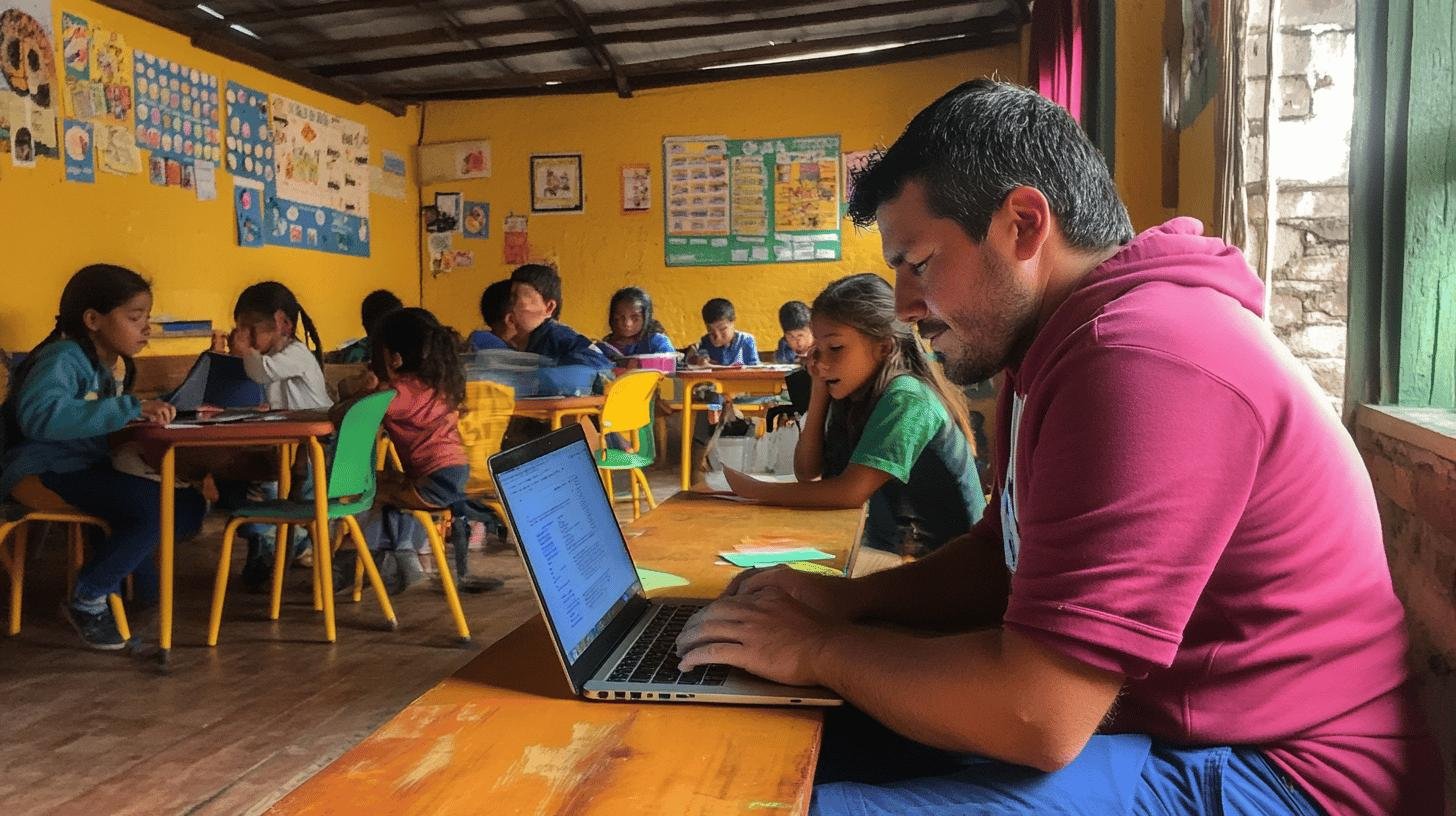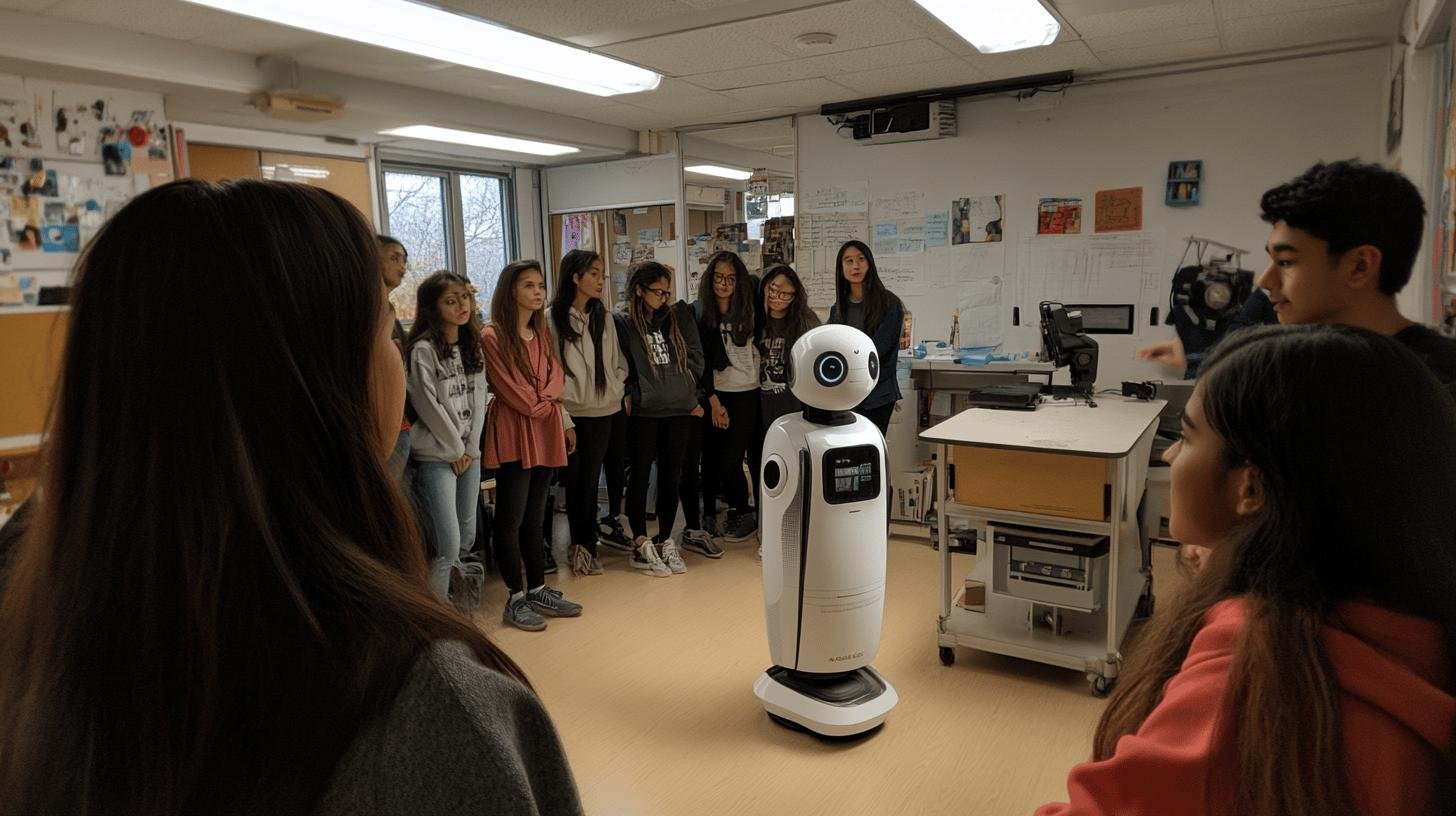Is AI the secret sauce to transforming education, or is it just adding more tech chaos to the classroom? That’s the big question everybody’s asking as AI steps into the world of education. Imagine a world where your learning experience is as personalized as your Netflix recommendations. AI integration in education does precisely that, sprucing up learning experiences with tools that offer real-time feedback and adjust content to fit each student. So, let’s explore how this tech marvel is reshaping the educational landscape, one classroom at a time.
How AI Integration is Enhancing Personalized Learning in Education
Imagine personalization in education like a tailored jacket; it fits perfectly. When learning is customized to each student, they understand concepts better, making their journey smoother and more engaging. AI plays a vital role in this, shaping personalized learning paths that adapt as students progress.
Here’s a glimpse of AI tools making this possible:
- Adaptive Learning Platforms: These adjust the difficulty level like a video game, matching your performance.
- AI Tutors: virtual helpers that guide you through challenging subjects with hints and explanations.
- Smart Content Creators: These generate quizzes and study materials for areas where you need more practice.
- Real-Time Feedback Systems: They provide instant feedback, letting you know if you need more practice.
- Predictive Analytics: AI anticipates where you might encounter difficulties and suggests resources.
These tools greatly impact student engagement and performance. With AI, learning becomes interactive and enjoyable. Students are more than passive listeners; they actively participate and receive immediate feedback. This keeps them motivated and eager to learn more.
Customized lessons lead to better performance, offering the right challenges at the right time and boosting confidence and skills. AI isn’t just a gadget; it’s transforming the personalization of learning.
AI in Classroom Management and Administrative Automation

AI integration in education is transforming classroom dynamics by handling tedious tasks once consuming teachers’ time. Now, educators can focus on connecting with students and less on paperwork.
Here’s how AI contributes:
- Grading Systems: AI grades tests and assignments quickly, freeing teachers to plan lessons.
- Attendance Tracking: Automatic attendance logging saves teachers from roll calls.
- Scheduling and Timetabling: AI creates schedules, managing timings and room availabilities efficiently.
- Resource Allocation: Tools help in allocating resources like projectors, ensuring they’re available as needed.
The effect on teachers and students is significant. Teachers have more time for teaching and engaging with students, crafting inspiring lessons. Students benefit from attentive and interactive educators, leading to enhanced learning experiences. With AI managing routine tasks, the classroom operates smoothly, fostering student success.
With AI handling the heavy lifting, everyone benefits!
Real-World Examples: AI Applications in Educational Platforms
AI transforms learning platforms into personalized instruction hubs. By integrating AI, these platforms adapt to individual needs, enhancing engagement and effectiveness.
1. Duolingo
Duolingo acts like your tireless language buddy. AI personalizes lessons based on your progress and mistakes. If French verbs trip you up, Duolingo provides extra practice and hints. This makes language learning enjoyable, keeping learners engaged and ensuring foundational concepts are understood before moving forward.
2. Coursera
Ever wondered how Coursera suggests just-right courses? That’s AI at work! It recommends courses and customizes assessments based on your learning history. For instance, completing data science courses might lead to suggestions for advanced topics. This personalized approach maximizes learning, focusing on areas that matter.
3. Squirrel AI
Squirrel AI is like having a personal tutor. Its adaptive platform constantly evaluates strengths and weaknesses, offering real-time feedback. For example, if you’re excelling in algebra but struggling with geometry, it adjusts lessons accordingly. This ensures tailored challenges and support, enhancing learning efficiency.
These AI platforms boost engagement and improve outcomes by offering customized experiences. The ability to personalize education is transformative, making learning accessible and enjoyable worldwide.
Addressing Challenges and Ethical Considerations of AI in Education

AI in education is a double-edged sword—full of potential but with challenges to address. A major concern is data privacy. Schools and platforms collect vast amounts of personal data, making its protection crucial. Another issue is ethical AI use. While AI can perform wonders, irresponsible use might lead to biases or unfair treatment.
Key challenges in AI-driven education include:
- Data Privacy Risks: Ensuring protection against data breaches or misuse.
- Bias in AI Algorithms: Avoiding reinforcement of biases by maintaining checks and balances.
- Over-reliance on AI: Ensuring AI enhances instead of replacing the essential human touch in education.
- Ethical Use: Ensuring fair and responsible AI deployment.
Addressing these challenges requires strong data protection policies. Schools must use robust encryption and access controls to safeguard information.
Maintaining human oversight is crucial. AI should support, not replace, educators. Human intuition and judgment are irreplaceable, and AI should complement these qualities.
Strict guidelines for AI deployment are essential. Regular audits can detect biases, ensuring AI supports educational equity.
By tackling these challenges, we can use AI’s power responsibly, creating better learning environments.
The Future of AI Integration in Education: Trends and Predictions
AI is set to transform education further, focusing on making learning more immersive. Virtual and augmented reality are paving the way for interactive, engaging classrooms. Imagine exploring the solar system or experiencing historical events as if present. Picture learning about ancient Egypt while virtually traversing pyramids!
The AI integration in education is not just growing in the market; it’s expanding rapidly. More schools and platforms are adopting AI to enrich learning experiences, suggesting promising innovative solutions ahead.
Emerging trends of AI integration in education include:
Virtual reality (VR) creates immersive environments for experiencing history and science. Augmented reality (AR) enhances real-world learning through digital overlays and interactions. AI-Driven Analytics personalizes learning paths and predicts student outcomes using data. Adaptive learning systems customize educational content to fit each student’s pace and needs.
These trends are transformative. VR and AR engage students in ways textbooks cannot. AI-driven analytics act like crystal balls, predicting student struggles before they occur. Adaptive learning systems ensure timely, relevant materials, keeping students interested.
Overall, these advancements make education more dynamic and personalized. Teaching methods will evolve, transforming learning into an exciting adventure.
Conclusion
AI integration in education is shaking up the classroom by bringing in personalized learning. It’s tailoring lessons to fit each student’s unique pace and style. Real-time feedback and adaptive learning tools are just a few of the highlights we touched on. Plus, streamlining classroom tasks frees up time for teaching.
What’s mind-blowing is the leap AI apps, like Duolingo and Coursera, are making. They’re boosting engagement like never before. Of course, we can’t overlook challenges like ethics and data privacy. But with careful attention, the future of AI in education looks bright and promising!
FAQ
How is AI integrated into education?
AI is integrated into education by creating personalized learning experiences, using adaptive learning technologies that adjust to student needs, and providing real-time feedback to improve engagement and performance.
What is the integration of AI tools in education?
The integration involves using AI tools to enhance both teaching and learning processes, automate administrative tasks, and personalize educational experiences, allowing teachers to focus on student interaction.
What is the primary goal of integrating AI in education?
The primary goal is to enhance personalized learning, tailor educational experiences to individual learning styles, and improve educational outcomes through technological advancements.
AI integration in education examples
Examples include language learning apps like Duolingo and online platforms like Coursera and Squirrel AI, using AI for personalized lessons and real-time feedback.
Future of AI in education
AI’s future in education includes emerging trends like virtual and augmented reality, promising immersive learning experiences, and continued growth in AI applications to innovate educational solutions.




